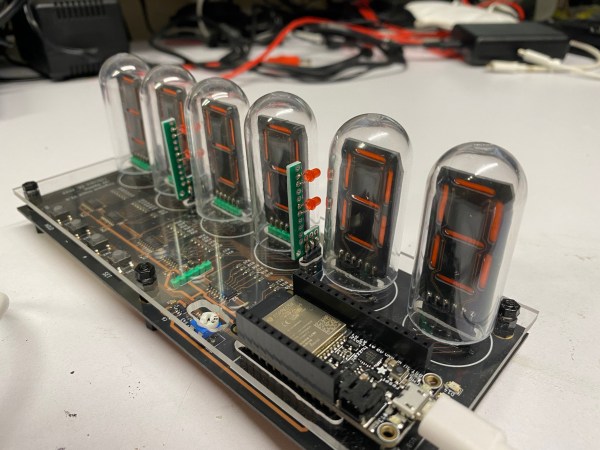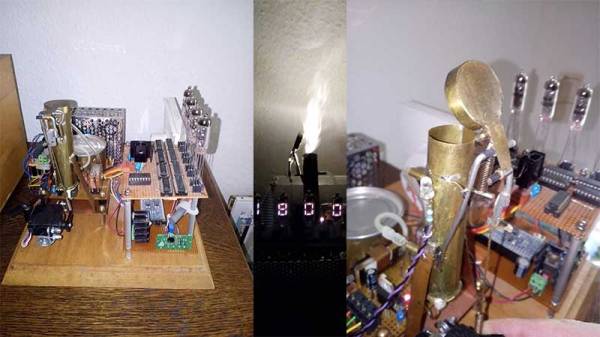We love clock projects here at Hackaday, and we’ve seen many beautiful designs based on a wide variety of display technologies. There are various types of glass tubes like Nixies, Numitrons and classic VFD displays, all of which have that warm “retro” glow to them. Then there’s LEDs, which are useful for making cool pixel-based timepieces and easy to drive with low-voltage electronics. So how about combining the best of both worlds, by using LEDs to make a Numitron-like display? That’s exactly what [Jay Hamlin] did when he built a digital clock based on LED filaments.
The heart of the project consists of orange LED filaments similar to the ones used in vintage-style LED light bulbs. [Jay] bought a bunch of them online and tried various ways of combining them into seven-segment displays, eventually settling on a small PCB with a black finish to give good contrast between the LEDs and the background. To make the displays look like they’re encased in glass, [Jay] bought a set of plastic test tubes and cut them to size.
The base of the clock is formed by a slick black PCB that holds an ESP32. The segments are driven through a set of 74LV595 shift registers to keep the required number of GPIOs to a minimum. There are no buttons: thanks to a WiFi connection and the Network Time Protocol the ESP32 automatically keeps the correct time.
The end result looks remarkably like a Numitron display at first glance, and remains a beautifully-made clock even if you notice that there’s no glass to be found. If you’re into LED filament clocks (and who isn’t?), check out this analog wall clock, or this spiderweb-like digital clock.
Continue reading “LED Filaments Make A Retro Clock Without Any Retro Parts”















